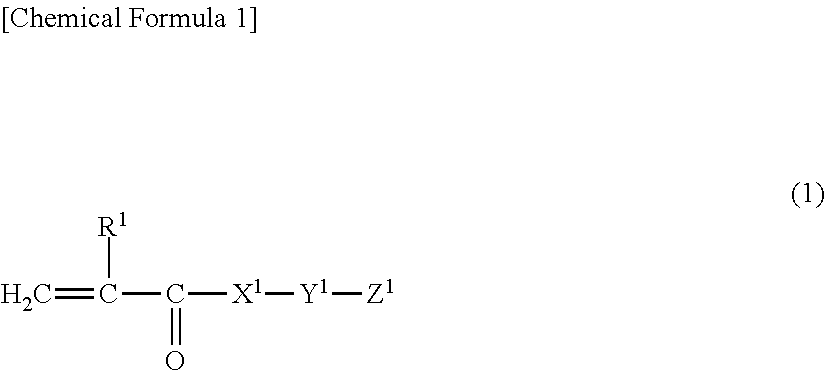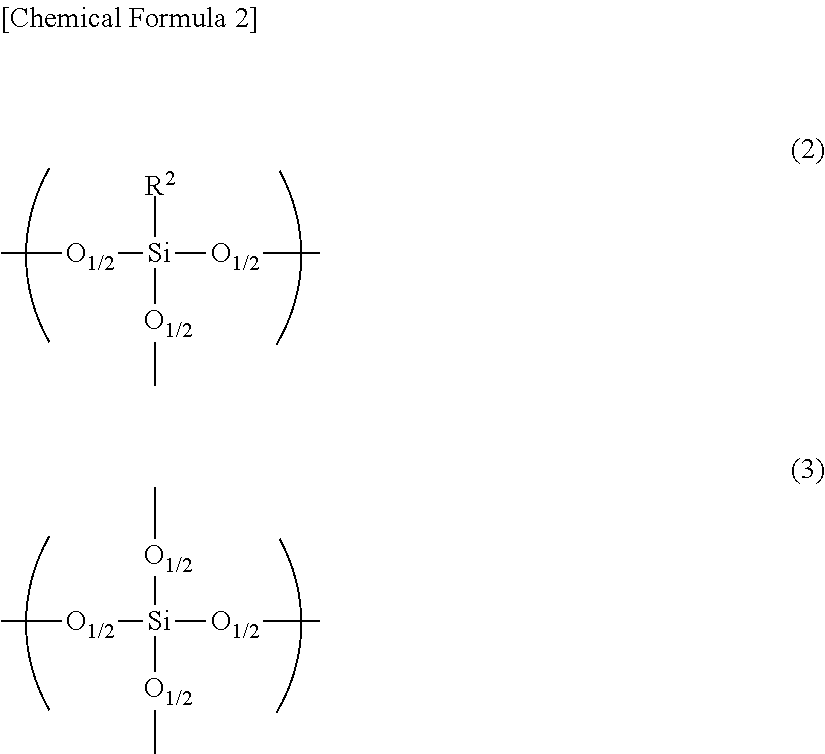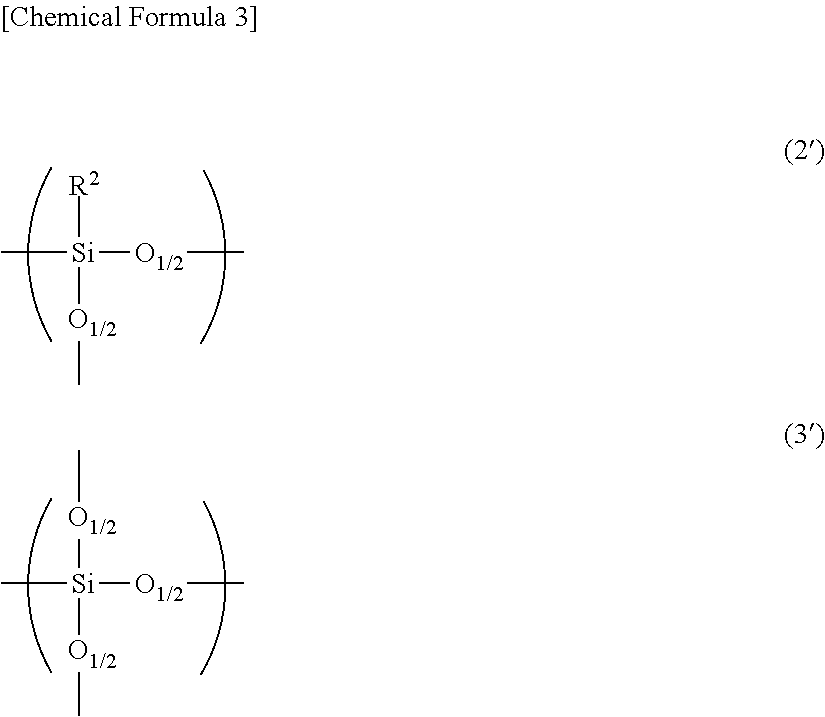Heavy release additive for release sheet, organopolysiloxane composition for release sheet, and release sheet
- Summary
- Abstract
- Description
- Claims
- Application Information
AI Technical Summary
Benefits of technology
Problems solved by technology
Method used
Image
Examples
synthesis example 1
[0199]A glass reactor equipped with a stirrer, a thermometer, a reflux condenser and a dropping device was charged with 50 parts by weight of toluene, 80.0 parts by weight of the radical polymerizable silicone macromonomer of formula (20) below (0.19 mol; Mw, 422) and 0.7 part by weight of dimethyl-2,2′-azobis(2-methylpropionate) (0.003 mol; Mw, 230.26) and heated to 70 to 80° C., after which a mixture of 5.0 parts by weight of methyl methacrylate (0.05 mol; Mw, 100.12; abbreviated below as MMA), 5.0 parts by weight of allyl methacryiate (0.04 mol; Mw, 126.15; abbreviated below as AMA), 10.0 parts by weight of glycidyl methacrylate (0.07 mol; Mw, 142.15; abbreviated below as GMA) and 50.0 parts by weight of toluene was added dropwise over 4 hours under a stream of nitrogen. Following 2 hours of polymerization at 70 to 80° C., 0.1 part by weight (0.0004 mol) of dimethyl-2,2′-azobis(2-methylpropionate) was added and 2 hours of polymerization was carried out, giving a silicone / acrylic ...
synthesis example 2
[0200]A glass reactor equipped with a stirrer, a thermometer, a reflux condenser and a dropping device was charged with 50.0 parts by weight of toluene, 91.8 parts by weight (0.22 mol) of the radical polymerizable silicone macromonomer of formula (20) above and 1 part by weight of benzoyl peroxide (0.004 mol; Mw, 242.23) and heated to 70 to 80° C., after which a mixture of 3.2 parts by weight (0.025 mol) of AMA, 5.0 parts by weight (0.035 mol) GMA and 50.0 parts by weight of toluene was added dropwise over 4 hours under a stream of nitrogen. Polymerization was carried out at 70 to 80′C for 2 hours, thereby giving a silicone / acrylic graft copolymer. The polystyrene-equivalent weight-average molecular weight measured by GPC was 30,000.
synthesis example 3
[0201]A glass reactor equipped with a stirrer, a thermometer, a reflux condenser and a dropping device was charged with 50.0 parts by weight of toluene, 42.2 parts by weight (0.1 mol) of the radical polymerizable silicone macromonomer of formula (20) above and 0,2 part by weight of tert-butylperoxy-2-ethylhexanoate (0.001 mol; Mw, 216 32) and heated to 60 to 70° C., after which a mixture of 20.0 parts by weight (0.28 mol) of MMA, 17.8 parts by weight (0.14 mol) of AMA, 20.0 parts by weight (0.14 mol) of GMA and 50.0 parts by weight of toluene was added dropwise over 4 hours under a stream of nitrogen. Following 2 hours of polymerization at 60 to 70° C. 0.1 part by weight (0.0004 mol) of tert-butylperoxy-2-ethylhexanoate was added and polymerization was carried out for 2 hours, giving a silicone / acrylic graft copolymer. The polystyrene-equivalent weight-average molecular weight measured by GPC was 100,000.
PUM
| Property | Measurement | Unit |
|---|---|---|
| Fraction | aaaaa | aaaaa |
| Percent by mass | aaaaa | aaaaa |
| Percent by mass | aaaaa | aaaaa |
Abstract
Description
Claims
Application Information
 Login to View More
Login to View More - R&D
- Intellectual Property
- Life Sciences
- Materials
- Tech Scout
- Unparalleled Data Quality
- Higher Quality Content
- 60% Fewer Hallucinations
Browse by: Latest US Patents, China's latest patents, Technical Efficacy Thesaurus, Application Domain, Technology Topic, Popular Technical Reports.
© 2025 PatSnap. All rights reserved.Legal|Privacy policy|Modern Slavery Act Transparency Statement|Sitemap|About US| Contact US: help@patsnap.com



